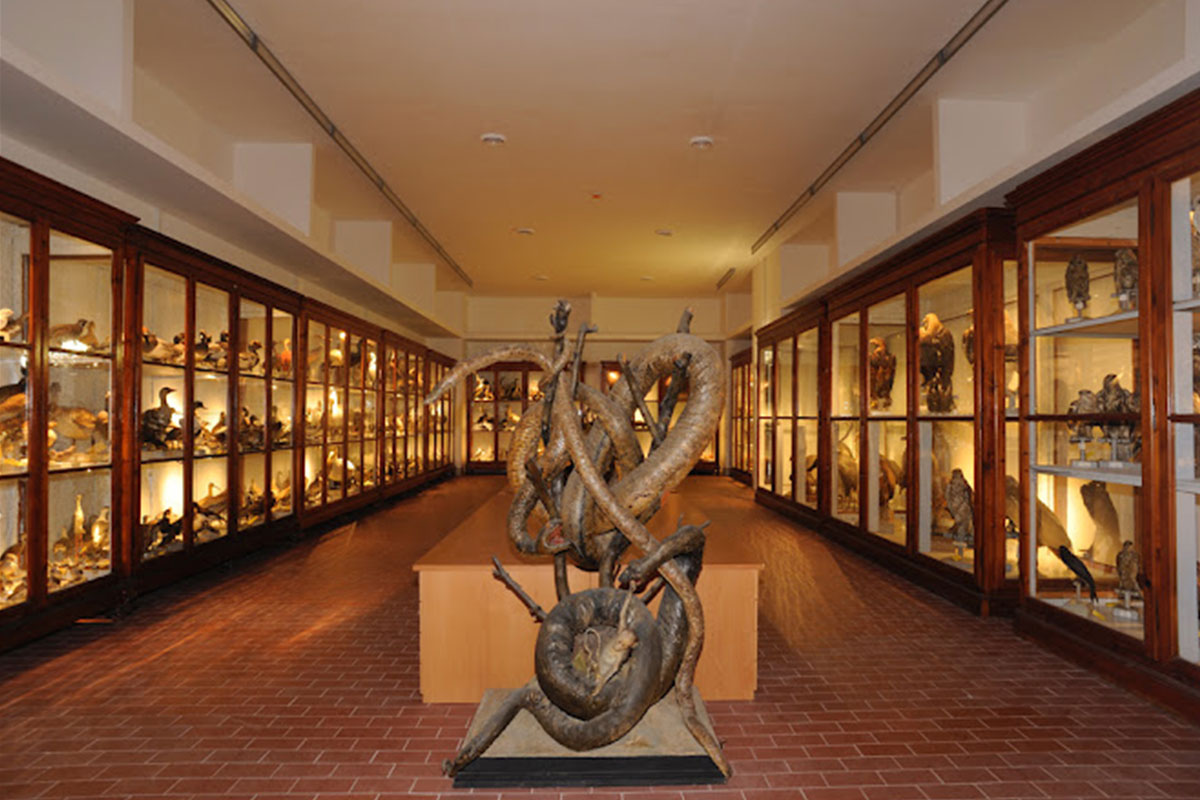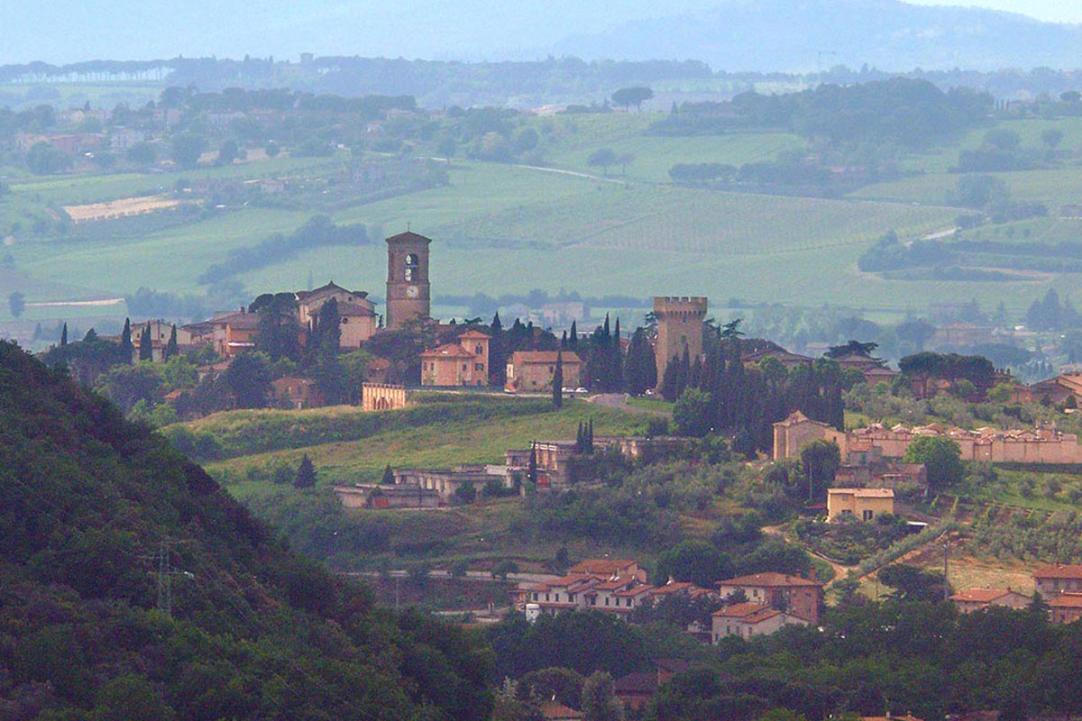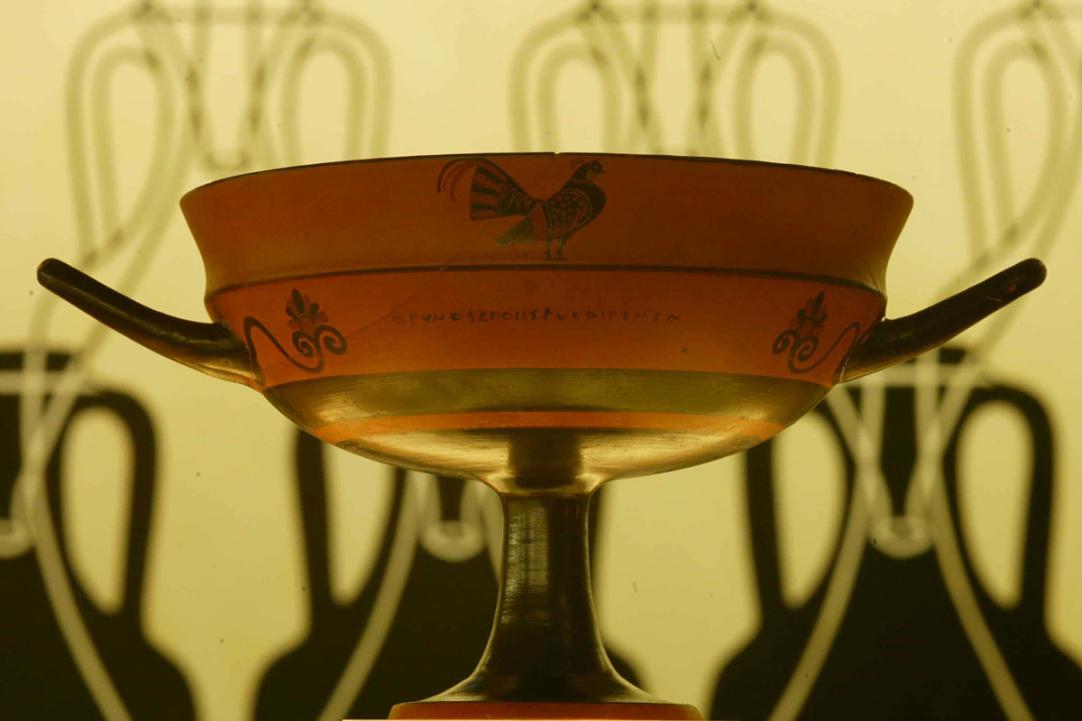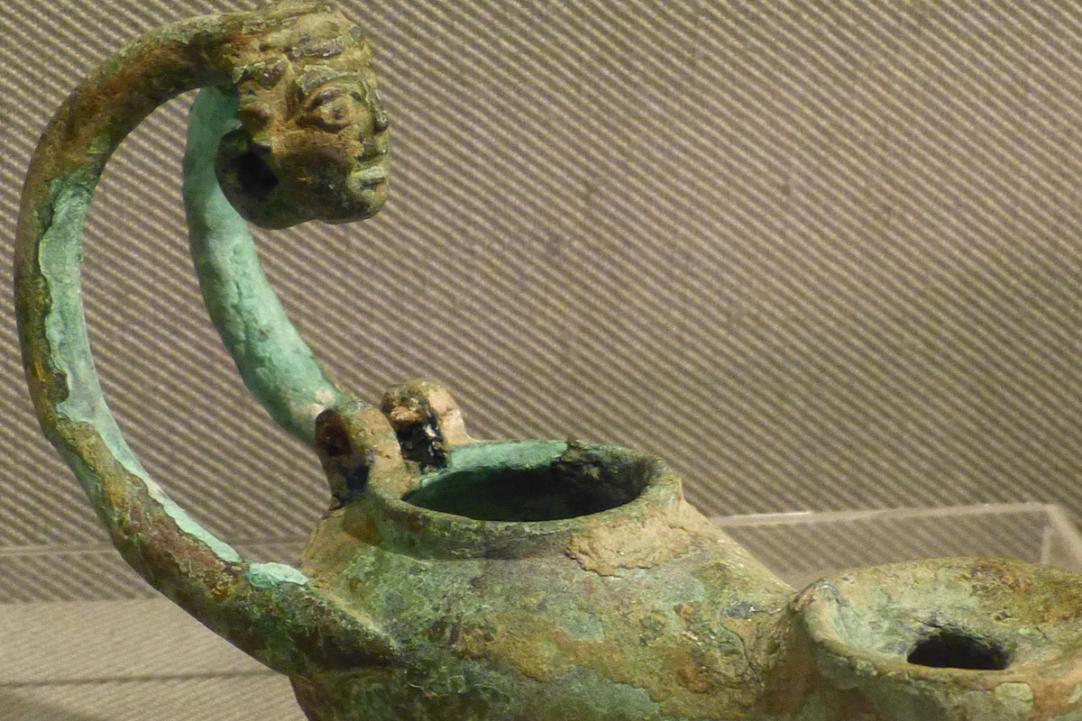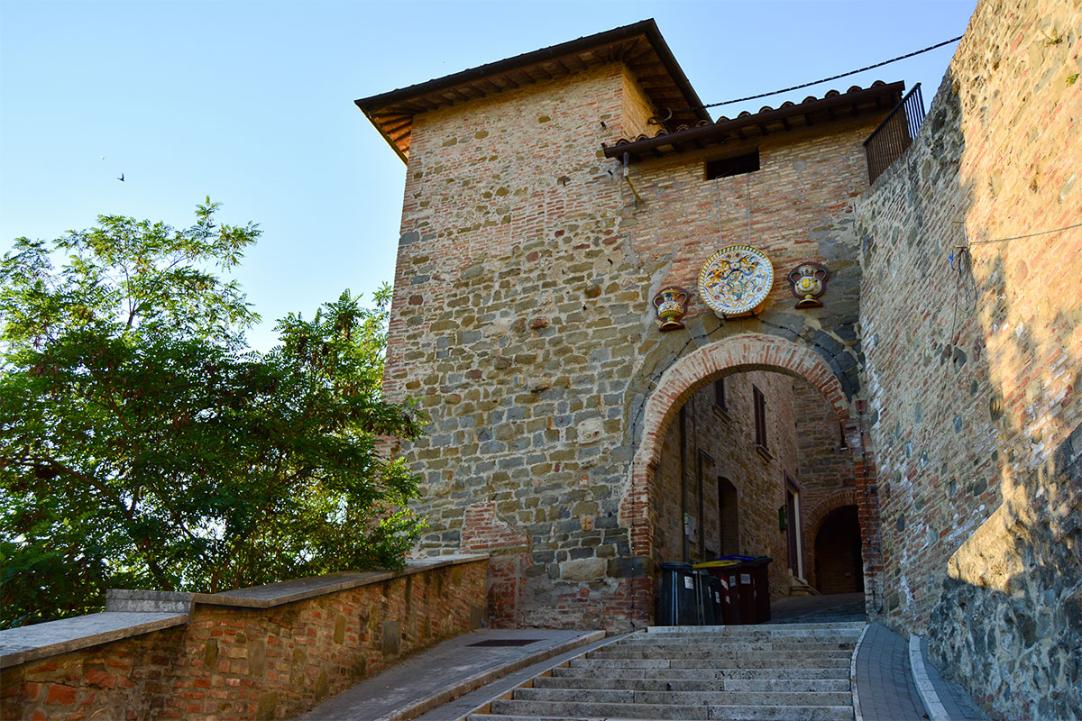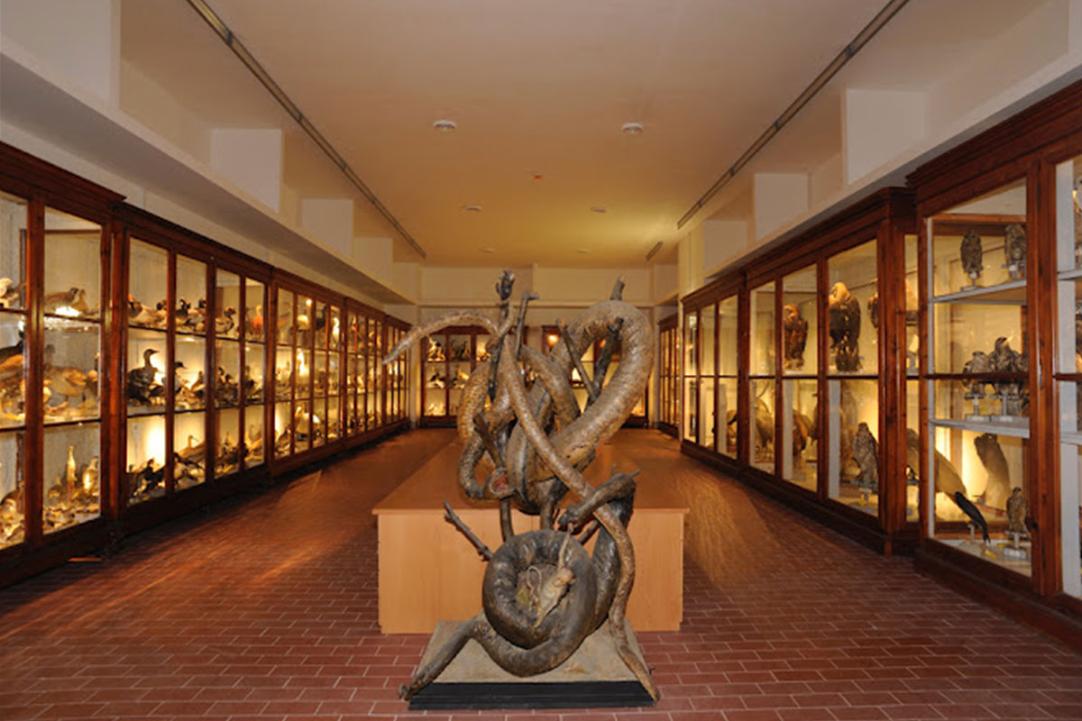| Distance | 55 km |
| Difference in level | 928 meters |
| Difficulty | Intermediate |
| Duration | 4 hours |
| Ground | Paved road, terrain |
| Recommended bike | gravel bike, trekking bike, mountain bike |
| To view in the area | Pila, Casenuove e Santuario della Misericordia in Ponte della Pietra, San Martino in Colle, San Martino in Campo, Torgiano, MOO, MUVIT, Ponte Nuovo di Torgiano, Deruta, Museo Regionale della Caraminca di Deruta, Galleria di Storia Naturale - CAMS, Casalina di Deruta, Santuario Madonna dei Bagni, Sant'Enea, Villa Guardabassi |
| Staging points | 1-Pila |
| Interchange | Routes 1 and 3 |
The first evidence of the village of Pila dates back to the Etruscan period: in 1556, in fact, a farmer discovered an Etruscan bronze statue, 180 cm high and dating back to the 1st century B.C., known as the Arringatore, representing the magistrate Aule Metele addressing the crowd. Several tombs and stone tumuli dating back to Roman times have also been found: the name of the village is said to derive from these constructions, called pilae. On the medieval past of Pila, or rather on its castle built as a control point for the entire territory west of Perugia, today stands the Villa Umbra complex, which houses the highly specialised school for civil servants. Beyond the town, you can also see the magnificent polychrome stained-glass windows of the parish church, built in 1898 in a pseudo-Gothic style, cast in the early 20th century by the Perugian painter Giuseppe Pennacchi.
Following an asphalt descent, we reach Castel del Piano, the birthplace of Maestro Luigi Cirenei, who composed, in 1929, La Fedelissima, the march of the Carabinieri Corps, still used today.
We continue first along a dirt road towards Sant'Andrea delle Fratte and then on a stretch of cycle track towards Casenuove di Ponte della Pietra. Where the Sanctuary of Santa Maria della Misericordia now stands, there was a votive shrine dedicated to Mater Misericordiae in the 18th century. It seems that during the construction of the bridge over the Genna torrent, which is the origin of the place name, some workers had outraged God with blasphemies and curses; the bridge apparently collapsed at some point for no apparent reason, but spared the workers: the fact was interpreted as a manifestation of divine mercy. A more accentuated devotion to the image therefore began and, over the following years, rumours began to spread of extraordinary prodigies obtained by those who went to pray there, attracting many pilgrims from all over central Italy.
After crossing Via Settevalli, we take an easy dirt road to San Martino in Colle, whose outline of a castle guarding the valley can still be seen. Immediately afterwards, we descend towards San Martino in Campo, which, in Roman times, must have housed a Campo di Marte, or soldiers' camp. The Christians later, without departing too far from the idea, decided to dedicate the settlement to Martin of Tours, the warrior saint.
From San Martino in Campo, it is a short drive to Torgiano, recognisable by the characteristic Baglioni Tower, evidence of this fortified village's military past. Today Torgiano is an internationally renowned wine centre, which was among the first in Italy to obtain the Denominazione di Origine Controllata.
In this regard, the MUVIT-Museum of Torgiano Wine and the MOO-Museum of Olive and Olive Oil are certainly worth a visit. The former occupies the 17th-century Palazzo Graziani-Baglioni and exhibits over 2,800 archaeological, ceramic, graphic and antiquarian artefacts documenting the centrality of wine in Mediterranean culture, from the 3rd millennium B.C. to the present day. On the other hand, the MOO occupies the premises of a mill that was decommissioned in the 1960s and documents olive growing and heliotechnical techniques, traditional uses and the symbolic meanings of the olive tree and olive oil.
Palazzo Malizia houses the MACC-Museum of Contemporary Ceramic Art, with its permanent exhibition of Vaselle d'Autore and the collection of ceramist and sculptor Nino Caruso.
But it is enough to continue along the provincial road of Torgiano and then, at Ponte Nuovo, take the green route that runs along the Tiber to find oneself in Deruta, where everything speaks of artistic craftsmanship: workshops, laboratories and a not too distant industrial past make it one of the Cities of Ceramics. The regional museum dedicated to this art describes the evolution of Deruta majolica from archaic to 20th-century production, and the exhibition route also includes the Archaeological Area of the Fornaci di San Salvatore, connected to the museum by a modern underground tunnel. The museum also houses the splendid 1524 enamelled floor of the Church of San Francesco, belonging to the same monumental complex, in which is preserved the fresco of the Eternal Father with Saints Rocco and Romano by Pietro Vannucci known as Perugino.
Continuing in the direction of Casalina, one comes across the former tobacco factory that houses the CAMS - Museum of Natural History, with its impressive ornithological collection and a collection of 6,000 specimens belonging to the mineral, plant and animal world from remote regions of the planet.
Crossing the bridge over the Tiber, we take the long road that leads to Vocabolo la Barca and continue in the direction of Sant'Enea, another fortified village guarding the hills, which we pass to head towards the Torre di Pila or Castello Guardabassi, a magnificent historic villa with an Italian-style garden that indicates the approach of the starting point.
MORE DETAILS ON KOMOOT
Progetto Around Perugia - realizzato con il contributo della Sottomisura 16.7 PSR per l'Umbria 2014-2022

Progetto Around Perugia - realizzato con il contributo della Sottomisura 16.7 PSR per l'Umbria 2014-2022

























